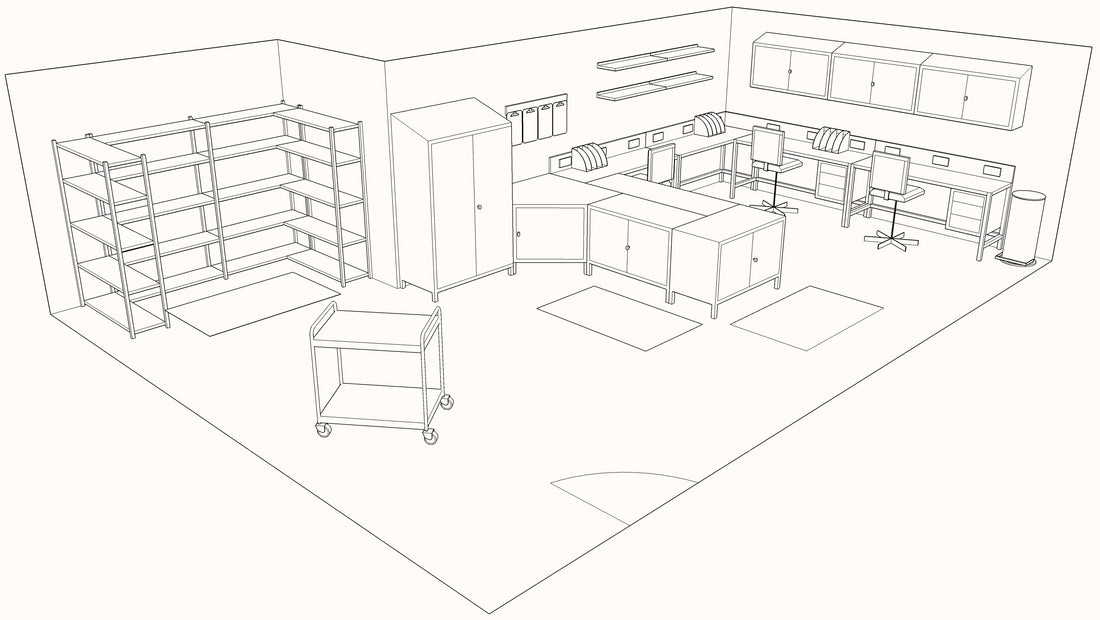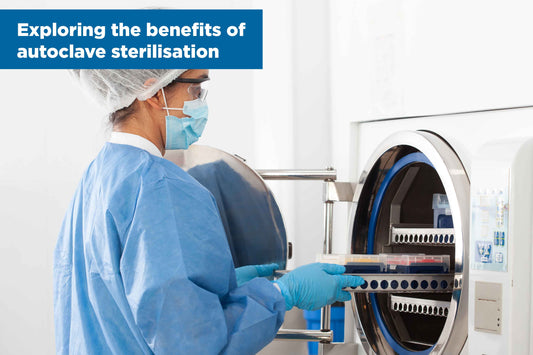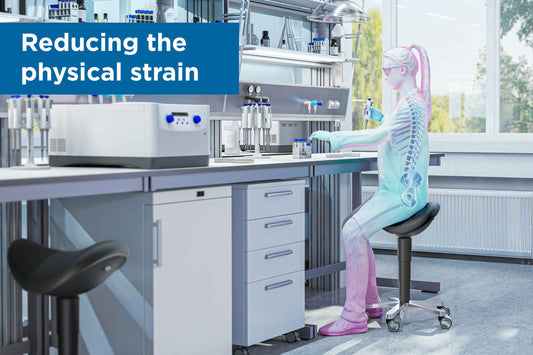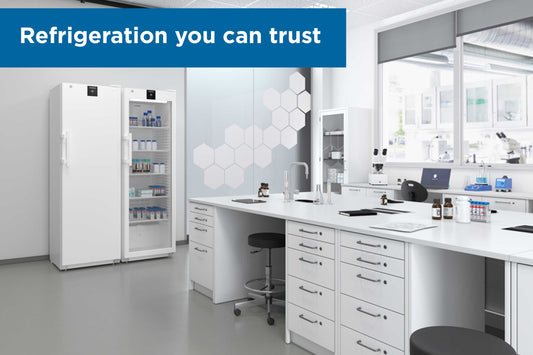
Unlike cleanrooms, many laboratories may not be ISO 14644 registered when it comes to air particle count. However, any organisation that would like to foster a hygienic culture should be asking the question: ‘how clean is my lab space, really?’
From hidden areas that are hard to access for cleaning, to dangerous dirt traps that provide a perfect home for bacteria to thrive and grow, there are many unseen hazards in poorly planned and managed laboratories.
Start improving the layout of your Laboratory
Whether it is a brand-new lab or new equipment arriving in an existing facility, the change affords an opportunity to review and reassess. The first question to ask is what is the laboratory’s purpose and has it changed over time? What equipment is used and how frequently? How many people are working in the space and what is the current and likely flow between each of the workstations? Are there any health and safety issues with regard to the specified equipment, such as heavy handling, electricals, radiation or COSHH?
Once you have fully considered the lab space usage, you can identify the current issues and plan accordingly to avoid unnecessary contamination risks. Key to this is the input of your in-house experts: your cleaning team. As specialists in their field, consult with them to identify potential problem areas. For example, if you know you will need to store dozens of small bottles, consider closed cupboard storage for your lab design.
I have a good ventilation system. Doesn’t this mean my laboratory is hygienic?
The single biggest risk to hygiene in laboratories is humans and the 10 grams of skin we each shed every day. While effective gowning protects your people from potentially hazardous materials, it also reduces the risk of skin fragments escaping.But of course, bacteria breeding particles will escape, and this is where effective ventilation can help reduce the risk of contamination.
Even if you’re not having to adhere to ISO 14644, if you have a ventilation system in your lab, you may well be controlling your air particle count.But whilst your HVAC system can be an effective partner in reducing particles in your lab space, you need to take into account other factors too.
The direction of air travel influences the ability of particles to settle. So, at design stage, it is vital to consider where vents are placed in relation to usage and the furniture. How does the layout and positioning of furniture hinder airflow and increase your risk?
Once installed, ventilation systems are often prohibitively expensive to change, which can make moving furniture and equipment a pragmatic solution in context of workflow and H&S considerations. It’s not just larger pieces of furniture, but smaller items too. Even a small cupboard with a solid back and positioned close to a vent can have a significant impact on air flow and create a still air point, enabling viruses, bacteria and spores to settle.
Where are your people going to be working? Humans working in the wrong place for an extended period can cause air flow blockages and affect the hygiene of your lab. When assessing your layout, add in people’s bodies and seek specialist advice on where best to place your furniture in relation to vents and airflow to avoid a build-up of risk.
How do I know if the furniture I already have is supporting a hygienic environment?
As well as seeking the input from your cleaners, the best method is to get down on your knees, look closely and run a clean cloth over hidden surfaces to check for dirt. Check your laboratory furniture for concealed ledges, ridges and inaccessible corners. Seemingly innocuous shelves and edges can form potentially dangerous harbourage points for objectionable organisms which, in the right conditions, can quickly multiply.
To make labs easier to keep safe, opt for storage furniture that is covered and with sloping ledges where possible. For any large, hero pieces of equipment in your laboratory, consider fitting a removable case around it so it’s easy to clean.
Consider mobile furniture (with brakes) to make it easier to carry out deep cleans and access all areas. If your furniture isn’t easy to move, ensure there is sufficient space between the floor and base of units, as well as around the sides, for thorough cleaning access.
The operation and productivity of your laboratories is paramount, keeping a clean and safe environment can be straightforward and cost effective when approached in the right way.
If you are planning on redesigning your Lab space to minimise the hygiene risk, then get in touch with us and ask about our Teknomek Design Service.
Make Teknomek work for you - contact us to arrange a comprehensive site survey with one of our Technical Sales Engineers, who will undertake a full survey and make recommendations on solutions to your design challenge, both bespoke or from our huge existing product catalogue; which now includes Sealwise Lab Furniture.
Call us now on 01603 788 833, or contact us here to arrange an appointment.




